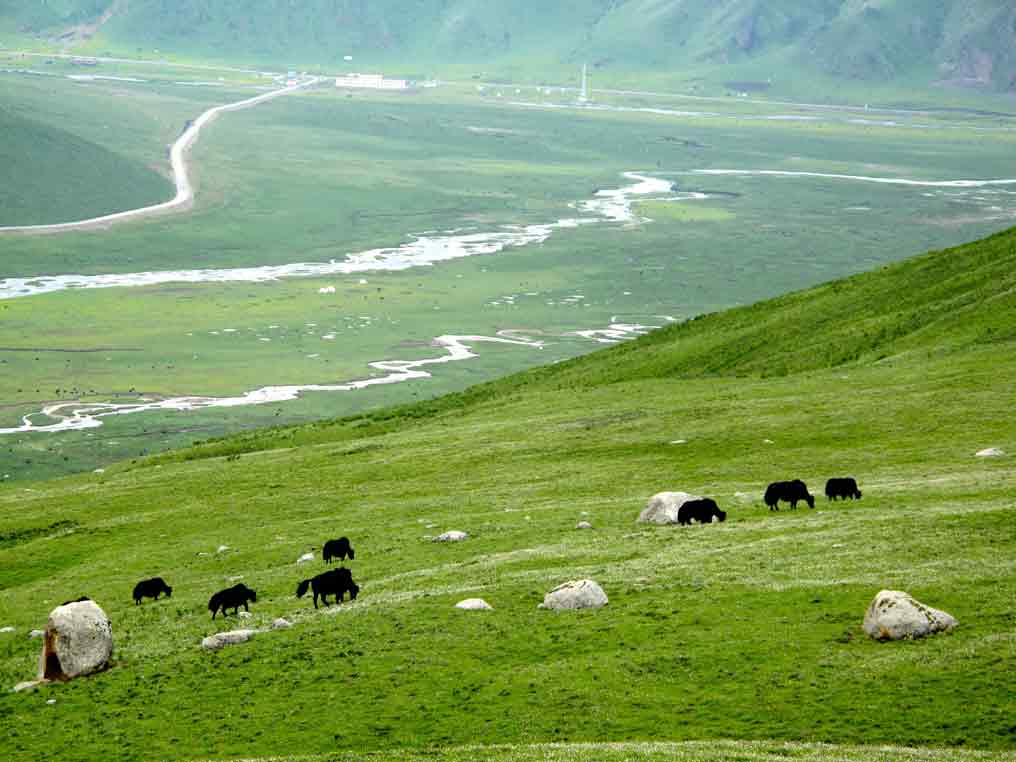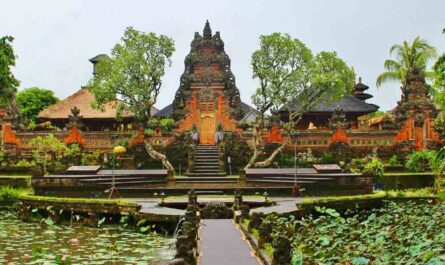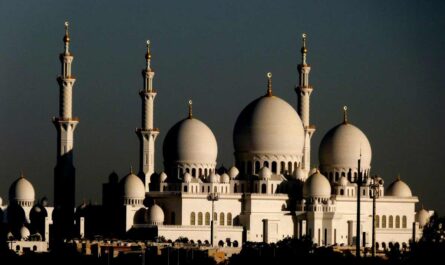The plateau of Tibet has many interesting facts. Tibet is a land of breathtaking mountains, panoramic views, valleys, ancient Buddhist temples, monasteries, yaks, and many more. The allure of Tibet’s temples and monasteries lies not merely in their architectural grandeur but in the profound stories etched within their walls, stories that unfold with each footstep and resonate in the stillness of the plateau air. Nestled amidst the vast expanse of the Himalayas, Tibet emerges as a geographical marvel, earning the illustrious moniker “Roof of the World” owing to its lofty average elevation that gracefully exceeds the formidable altitude of 4000 meters above sea level. his elevated sanctuary, a testament to nature’s architectural prowess, beckons intrepid souls to explore its mesmerizing heights. In this article, I am going to talk about the plateau of Tibet facts.
Plateau of Tibet Facts: Landscapes, Nature, Life, Travel
The undulating terrain, draped in mystic allure, crafts an awe-inspiring tableau where towering peaks play hide-and-seek with the clouds, orchestrating a symphony of grandeur. The journey becomes more than a physical exploration; it transforms into a pilgrimage of the soul, where the sacred and the secular converge in a harmonious dance, leaving indelible imprints on the hearts of those fortunate enough to tread upon this sacred land. Here are the plateau of Tibet facts:
1. Plateau of Tibet at a glance
| Dimensions |
| Length |
2,500 km (1,600 mi) |
| Width |
1,000 km (620 mi) |
| Area |
2,500,000 km2 (970,000 sq mi) |
| Location |
China (Tibet, Qinghai, western Sichuan, Northern Yunnan, Southern Xinjiang, Western Gansu)
India (Ladakh, Lahaul & Spiti), Pakistan (Gilgit Baltistan)
Nepal (Northern Nepal)
Bhutan
Tajikistan (Eastern Tajikistan)
Kyrgyzstan (Southern Kyrgyzstan) |
| Range coordinates |
33°N 88°E |
2. Precipitation Patterns on the Tibetan Plateau
The meteorological conditions on the Tibetan Plateau exhibit a marked irregularity throughout the calendar year. The commencement of the wet season, a period characterized by increased precipitation, typically initiates its atmospheric dance in the juncture of June and July, persisting steadfastly until the inaugural days of September. This climatic symphony plays out in a rhythm that, instead of adhering to the conventional norms of steady rainfall, undulates with a capricious temperament.
3. Buddhism in Tibet
Nestled within the folds of the 7th and 8th centuries, the profound tendrils of Buddhism gradually wove into the cultural fabric of Tibet, its influence transcending mere rituals to assume the mantle of the primary faith in this mystical land. The rich tapestry of Tibetan spirituality, painted with the hues of Buddhist philosophy, has woven itself into the very essence of the region. Despite the pervasive presence of Buddhism, like whispers in the wind, remnants of the ancient Bon tradition persist, echoing through the valleys and resonating within the hearts of those who choose to tread the path less traveled. Monastic life, an embodiment of spiritual dedication, thrives amid the towering peaks, sustaining the delicate equilibrium between tradition and the winds of change.
4. Diversity in Belief
In the shadow of Buddhism’s omnipresence, a subtle dance of diversity plays out on the spiritual stage of Tibet. While the majority bow to the teachings of Siddhartha Gautama, there remains a steadfast contingent that continues to tread the path of Bon. These adherents, like stalwart guardians of an ancient flame, practice their age-old rituals, casting a nuanced silhouette against the dominant Buddhist backdrop. The coexistence of these two traditions paints a tableau of spiritual plurality, a testament to the resilience of belief systems in the face of time’s inexorable march.
5. Monastic Magnificence
Dotting the vast expanse of Tibet, monasteries emerge as architectural marvels and bastions of spiritual pursuit. Amidst the craggy peaks and serene plateaus, these monastic sanctuaries stand as a testament to the enduring relationship between the people and their faith. Each monastery, a tapestry of prayer flags fluttering in the mountain breeze, serves as a beacon for the devoted pilgrims who traverse challenging terrains seeking solace and enlightenment. The energetic pulse of monastic life resonates through the halls, a symphony of chants and rituals that echo the timeless rhythm of Tibetan spirituality.
6. The Enigmatic Landscape
Stretching across a staggering 1.22 million square kilometers, the land of Tibet unfurls beneath the sky like a vast, ancient manuscript waiting to be deciphered. This expanse, the second-largest province in China, dwarfs the imagination with its sheer magnitude. From the sublime beauty of the Tibetan Plateau to the rugged allure of the Himalayan peaks, the landscape is a canvas on which nature has painted with a diverse palette. Every valley, every mountain pass, becomes a chapter in the story of Tibet, inviting exploration and contemplation in equal measure.
7. Dimensions of Tibet
Within the geopolitical confines, Tibet sprawls as a colossal entity, boasting an area that transcends the ordinary. This geographical behemoth, the second-largest province in the expansive tapestry of China, weaves together diverse terrains and climates. From the arid stretches of the Changtang Plateau to the verdant embrace of river valleys, Tibet unfolds as a multidimensional tableau. Its dimensions, both physical and metaphorical, render it not just a region on the map but a repository of cultural, spiritual, and natural wonders awaiting discovery by those drawn to its enigmatic allure.
8. Microclimates: Valleys of Weather Respite
Amid this meteorological complexity, the valleys on the Tibetan Plateau emerge as enigmatic sanctuaries offering respite from the unpredictable precipitation. A paradigmatic example is the city of Lhasa, where the summer months unveil a climatic tapestry woven with warmth. The sun, unrelenting in its intensity, casts its brilliance upon the landscape, orchestrating scorching days.
Yet, as the sun yields its dominion to the nocturnal realms, a cool serenity envelops the valleys. During the monsoon dalliance in July and August, precipitation manifests itself, but with an intriguing twist – the rains, like clandestine performers, prefer the cloak of night. In daylight hours, the weather assumes an idyllic disposition, bestowing upon visitors an experience of unparalleled pleasantness. This climatic choreography renders the summer months as a zenith, an apex of allure for those who traverse the terrain.
9. Lhasa’s Meteorological Symphony
Lhasa, the cultural heart of Tibet, encapsulates the essence of this climatic ballet. Amidst the peaks and valleys, the summer months, donned in a robe of warmth, beckon visitors with a magnetic charm. The sun, an unwavering protagonist, presides over the diurnal proceedings, casting a benevolent glow upon the cityscape. The days unfold in a crescendo of heat, prompting denizens and tourists alike to seek shelter in the shade of architectural marvels that echo tales of centuries past.
Yet, as twilight descends, the climate undergoes a metamorphosis. While the monsoon may release its aqueous opulence during the nocturnal hours, the daylight hours remain untarnished, fostering an environment of sublime comfort. It is this nuanced interplay of weather elements that renders Lhasa’s summer months a coveted interlude for those who traverse its storied streets.
10. The Tibetan Plateau’s Geographic Tapestry
Nestled between the imposing majesty of the Himalayan range to the south and the arid expanse of the Taklamakan Desert to the north, the Tibetan Plateau stands as a testament to geographical grandeur. This lofty expanse, elevated and aloof, is not merely a canvas for meteorological theatrics but also a stage for diverse landscapes. The juxtaposition of mountainous splendor and desert austerity paints a tableau of extremes. This juxtaposition, perhaps one of the quintessential plateau of Tibet facts, manifests in a geographic chiaroscuro, where verdant peaks meet the starkness of a desert embrace. This unique positioning bequeaths upon the plateau an identity that transcends mere meteorological vagaries, forming a tapestry woven with the threads of climatic complexity and geographic splendor.
11. Linguistic Diversity in Tibet
Tibet, a region known for its awe-inspiring landscapes and rich cultural heritage, boasts the Tibetan language as its linguistic cornerstone. This linguistic tapestry, however, is woven with intricate threads of variation. The predominant dialect, Standard Tibetan, resonates in the bustling streets of Lhasa and echoes throughout the expansive Tibetan Autonomous Region (TAR). Alongside Chinese, it holds the esteemed status of being the official language within TAR, shaping the linguistic landscape of this unique and mystical realm.
12. The Enigmatic Chang Tang Wildlife Reserve
Nestled within the heart of Tibet lies the Chang Tang Wildlife Reserve, a colossal expanse spanning nearly 500,000 square kilometers. This vast and untamed Tibetan wilderness stands as the second-largest protected area on the globe, preserving the delicate balance of its ecosystem. Within its borders, a diverse array of endangered species finds refuge, adding to the reserve’s mystique. From elusive snow leopards to the iconic Tibetan antelope, this sanctuary epitomizes the harmonious coexistence of nature and wildlife in the high plateaus of Tibet.
13. Shoton Festival: A Tapestry of Tradition
Against the backdrop of Tibet’s majestic peaks and serene landscapes, the Shoton Festival unfolds as a cultural kaleidoscope on the 30th day of the sixth month, typically gracing the month of August. Originating in the 17th century, this vibrant celebration has its roots in the offering of yogurt to monks, marking the end of their protracted retreats. Shoton transcends a mere festival; it is a manifestation of tradition and spirituality. Massive monasteries come to life, adorned with colossal Thangka paintings, creating a spectacle that resonates with the essence of Tibetan heritage.
14. A Calendar of Cultural Festivities
Tibetan cultural vibrancy extends beyond Shoton, permeating the annual calendar with a diverse array of festivals. The Butter Lamp Festival illuminates the night skies, symbolizing the dispelling of darkness through the glow of countless butter lamps. The Pandan Lhamo Festival pays homage to the protective deity of Lhasa, infusing the air with religious fervor. The Bathing Festival marks a ritualistic cleansing of the body and soul in sacred waters, while the Wongkor Festival weaves together music, dance, and theatrical performances, creating a symphony of cultural expression that resonates through the very fabric of Tibetan identity.
15. Sera Monastery Debates: A Tranquil Spectacle
Nestled amidst the serene landscapes of Lhasa, Sera Monastery stands as a beacon of spiritual contemplation and intellectual exchange. Among its many enchanting facets, the daily debates that unfold within its hallowed walls have earned it a reputation as one of the most well-liked locations for such intellectual sparring. As the amber hues of the Tibetan sun begin to wane each afternoon, a hushed anticipation envelops the air. Monks, clad in traditional burgundy robes, assemble in a sacred ritual of discourse, a practice observed with unwavering devotion on every day of the week except for Sundays. It is a mesmerizing spectacle, where the echoes of wisdom bounce off the ancient stones, creating a harmonious symphony of dialectics that has captivated visitors for centuries.
16. Tibet’s Spiritual Tapestry: A Multitude of Monasteries
Tibet, often revered as the “Roof of the World,” boasts an extraordinary distinction—the highest concentration of Buddhist monasteries on the globe. A staggering count of over 7,000 monastic sanctuaries dot the majestic Tibetan landscape, each carrying a unique spiritual legacy. These sacred institutions serve as both architectural wonders and repositories of profound Buddhist teachings, contributing to the rich spiritual tapestry that defines Tibet. To delve into the facts of Tibet is to unravel a narrative woven with the threads of devotion, resilience, and a profound connection to the spiritual realm.

17. Tashi Lhunpo Monastery: A Gilded Marvel in Shigatse
In the heart of Shigatse, the second-largest city in Tibet, stands the awe-inspiring Tashi Lhunpo Monastery. This venerable institution is home to a marvel that transcends mere artistic expression—the Maitreya or Future Buddha statue. Rising to an impressive height of 26 meters, this sacred effigy is adorned with a regal opulence that befits its spiritual significance.
A breathtaking spectacle, the statue is embellished with approximately 300 kilograms of meticulously applied gold gilding, a testament to the craftsmanship and devotion that have defined the monastery since its founding in 1447 by the first Dalai Lama. The Tashi Lhunpo Monastery stands as a testament to the enduring spiritual legacy that permeates the very fabric of Tibet’s cultural landscape.
18. Tibetan Topography: A Mosaic of Diversity
Nestled within the heart of the Asian continent, the Tibetan landscapes unfurl like a mesmerizing canvas, showcasing an awe-inspiring spectrum of terrains. From lush, verdant forests that cloak the earth in emerald hues to the stark, almost otherworldly moonscapes and deserts that paint a picture of sublime desolation. Meandering through this geographical tapestry are deep river canyons that carve their way through the ancient land, coexisting harmoniously with some of the loftiest mountain ranges the world has ever known.
A captivating panorama unfolds, revealing vast grasslands that seem to stretch into eternity, alpine lakes shimmering like sapphires, and glaciers that stand as frozen sentinels guarding the secrets of this extraordinary realm. In this kaleidoscope of topography, Tibet shelters an astonishing array of wildlife, with endemic species of animals and birds thriving in the diverse climates that define the region.
19. The Hydrological Heartbeat: Tibet’s Rivers
A staggering 46% of the global population hinges its survival on the lifeblood that flows from the Tibetan plateau. At the heart of this hydrological significance are Tibet’s major rivers, each carving its liquid path through the rugged terrain. The Brahmaputra, Indus, Sutlej, Ganges, Yellow River, and the Yangtze stand as majestic conduits, weaving through the high-altitude expanse.
These waterways, born in the sacred folds of Tibet, traverse vast distances, nourishing lands and civilizations far beyond its borders. From the fertile plains of India to the bustling cities of China, the rivers emanating from Tibet thread their way through Bangladesh, Myanmar, Nepal, Bhutan, and various Southeast Asian nations. Beyond the sustenance they offer, these rivers play a pivotal role as conduits of power, harnessing electricity that illuminates homes and fuels industries across the region.
20. Tibet’s Transcendent Role in Global Water Dynamics
In the intricate dance of global water dynamics, Tibet emerges as a central protagonist, wielding unparalleled influence on the ebb and flow of rivers that sustain life across vast swathes of the continent. The intricate interplay between the Tibetan plateau and the myriad rivers that cascade from its lofty heights serves as a hydrological ballet, choreographed by the forces of nature.
The significance of this region transcends geographical boundaries, as the water resources originating in Tibet become the lifeblood of nations, fostering ecosystems, supporting agriculture, and propelling the turbines of hydroelectric power stations. The delicate balance of this aquatic symphony underscores the interconnectedness of the planet’s water systems, with Tibet assuming a role of profound responsibility in safeguarding this delicate equilibrium.
21. Genetic Adaptations to High Altitudes
Tibetans, inhabitants of the world’s highest plateau, have evolved unique genetic variations that enable them to thrive in the challenging conditions of excessive altitude. These genetic adaptations play a pivotal role in their ability to utilize oxygen more efficiently, setting them apart from populations at lower altitudes. Among these genetic distinctions are specific traits that contribute to larger lung capacity, allowing Tibetans to breathe in thinner air with enhanced effectiveness. The intricate interplay of these genetic factors manifests in physiological advantages, providing them with a distinct edge in navigating the demanding high-altitude environment.
22. Physiological Prowess: Efficient Oxygen Utilization
In the rarefied air of Tibet, the indigenous population showcases remarkable physiological prowess, a consequence of their genetic adaptations. These adaptations empower Tibetans with an unparalleled ability to extract oxygen from the thin atmosphere, ensuring their bodies are adept at oxygen utilization. The efficiency with which their respiratory systems function not only exemplifies the marvels of human evolution but also serves as a testament to the intricate mechanisms that enable Tibetans to endure and flourish in conditions where others might struggle.
23. Endurance in Action: Swift Movements and Steadfast Stamina
Travelers in Tibet are immediately struck by the impressive physical capabilities of the locals. Tibetans exhibit a distinctive vigor, walking briskly and engaging in strenuous labor with apparent ease, defying the norms of fatigue encountered by those unaccustomed to the altitude. Their endurance becomes particularly evident in activities such as the sacred trek around Mount Kailash, a spiritually significant journey. While others may require 2-3 days to complete the trek, Tibetans accomplish it in a single day, underscoring their unparalleled stamina and fortitude in the face of challenging geographical and climatic conditions.
24. Cultural Significance: Spiritual Trekking and Mount Kailash
One of the most culturally significant and spiritually revered trekking routes in Tibet is the circuit around Mount Kailash. This sacred journey holds immense importance in Tibetan religious traditions, attracting pilgrims from far and wide. What sets Tibetans apart is their ability to complete this demanding trek in a fraction of the time it takes others. The intricate intertwining of culture, spirituality, and physical prowess becomes vividly apparent as they traverse the sacred path, embodying a profound connection between their cultural heritage and the challenging landscape they call home.
25. The Allure of Mount Everest
Mount Everest, the majestic behemoth that pierces the sky, exerts an irresistible allure, drawing in a multitude of adventurers year after year. The recent addition of a modern highway weaving through the rugged terrains, seamlessly connecting the ancient city of Lhasa, the heartbeat of Tibet, to the Everest Base Camp, has transformed the arduous pilgrimage into a mere two-day odyssey. This newfound accessibility beckons thrill-seekers and nature enthusiasts alike to embark on a journey to conquer the pinnacle of the world.
26. Unveiling the Tapestry of Tibetan Beliefs
Delving into the tapestry of Tibetan history, we unearth the spiritual roots entrenched in the Bon faith. A sacred tradition predating the seventh century, the Bon faith was the spiritual cornerstone for Tibetans, fostering a unique worldview and guiding their cultural evolution. This ancient belief system, often overshadowed by the prominence of Buddhism in the region, provides a captivating glimpse into the spiritual mosaic that has shaped the cultural identity of Tibetans for centuries.
27. The Enigmatic Chiru Antelope and its Precious Wool
In the vast wilderness of Tibet roams the enigmatic chiru antelope, an endangered species that holds the key to the world’s most coveted wool. Reverently referred to as “Tibetan gold,” the wool derived from chiru antelopes finds its way into exquisite shawls, fetching astronomical prices, sometimes soaring to an astonishing $15,000. The rarity of these creatures, coupled with the relentless threat posed by poachers, paints a poignant picture of the challenges faced by this species. Often falling victim to mass slaughter, the chiru antelope stands as a symbol of both nature’s magnificence and the perilous consequences of human greed.
28. Guge Kingdom’s Encounter with Christianity
In a bygone era, the sovereigns reigning over the illustrious Guge Kingdom extended a gracious welcome to foreign visitors, even permitting the construction of the inaugural Christian church within their hallowed grounds. A harmonious intersection of cultures transpired as the spiritual tapestry of the kingdom broadened. However, as the temporal currents of time surged forward, a stark transformation manifested by the year 1745. A decree, shrouded in mystery, unfurled its edict—travelers, once embraced, were now banished. The narrative echoes the enigmatic whispers of the Guge Kingdom’s evanescent dalliance with Christianity, an ephemeral chapter veiled in historical intrigue.
29. Linguistic Labyrinth of Tibet
Venture into the ethereal realms of Kham and Amdo, where the mellifluous cadence of the Tibetan language weaves an intricate tapestry of communication. A paradox unfolds as denizens of Lhasa find themselves confounded by the linguistic nuances flourishing in these distant territories. Dialects burgeon, proliferating within the crevices of linguistic diversity. Each dialect begets progeny, forming a lineage of linguistic intricacy. The quintessence of this linguistic ballet lies in the myriad offshoots that embellish both Kham and Amdo Tibetan, where the former boasts five distinct dialects, and the latter, a staggering seven. The conversation is an orchestra of tongues, an eloquent symphony that orchestrates harmony within diversity. Fitness – Meditation – Diet – Weight Loss – Healthy Living – Yoga
30. Varied Tongues of the Himalayan Expanse
Beyond the sacred realms of Tibet, the Himalayan expanse resonates with a cacophony of dialects, each imbued with its unique resonance. Traverse the mountainous terrains of Ladakh, India, and the enchanting valleys of Bhutan, and you’ll encounter linguistic tapestries woven with threads of distinctiveness. Ladakh, nestled in the Indian subcontinent, echoes with linguistic melodies that diverge from the Tibetan cadence, creating a mosaic of expression. Meanwhile, Bhutan, ensconced in the pristine beauty of the Eastern Himalayas, articulates its linguistic narrative—a lexicon that mirrors the cultural richness flourishing within its mystical valleys. The linguistic diaspora of the Himalayan frontier unveils a polyphony of voices, each narrating the tales of its cultural genesis.
More Interesting Articles




